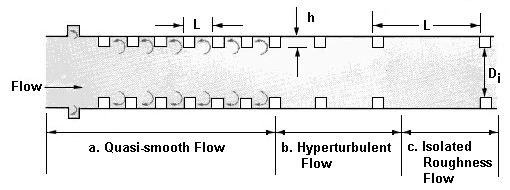HY8:Increased Resistance in Culverts: Difference between revisions
From XMS Wiki
Jump to navigationJump to search
m (Jcreer moved page HY8 Increased Resistance in Culverts to HY8:Increased Resistance in Culverts) |
No edit summary |
||
| (3 intermediate revisions by the same user not shown) | |||
| Line 1: | Line 1: | ||
The increased resistance dissipator type can be used for either box culverts or circular culverts. Variables for these [[HY8:Energy Dissipators|energy dissipators]] are described below. | |||
==Increased Resistance in Box Culverts== | |||
The input variables required for this calculation are the following: | |||
* h/r<sub>i</sub>—Ratio of roughness element height divided by hydraulic radius taken about the top of the roughness element. | |||
* Height of the roughened section (h) | |||
==Increased Resistance in Circular Culverts== | ==Increased Resistance in Circular Culverts== | ||
The input variables required for this calculation is the following: | The input variables required for this calculation is the following: | ||
| Line 17: | Line 25: | ||
* h — height of roughness element | * h — height of roughness element | ||
* D<sub>i</sub> — diameter of roughened section (opening) | * D<sub>i</sub> — diameter of roughened section (opening) | ||
{{HY8Main}} | |||
[[Category:Energy Dissipators|I]] | |||
Latest revision as of 16:49, 30 November 2016
The increased resistance dissipator type can be used for either box culverts or circular culverts. Variables for these energy dissipators are described below.
Increased Resistance in Box Culverts
The input variables required for this calculation are the following:
- h/ri—Ratio of roughness element height divided by hydraulic radius taken about the top of the roughness element.
- Height of the roughened section (h)
Increased Resistance in Circular Culverts
The input variables required for this calculation is the following:
- L/Di — Ratio of roughness element spacing divided by the diameter of the culvert opening at the roughness element. (Range = .05 to 1.5)
- h/Di — Ratio of roughness element height divided by the diameter of the culvert opening at the roughness element. (Range = .005 to .1).
- Lr/Pi — Ratio of the roughness length to inside perimeter (Range = 0.0 to 1.0)
- Diameter of roughened section (Opening, Di)
The following figure shows the flow regimes and variables for an increased resistance energy dissipator implemented in a circular culvert.
Variables from the figure
- L — Length from beginning of one roughness element to the beginning of the next roughness element.
- h — height of roughness element
- Di — diameter of roughened section (opening)
